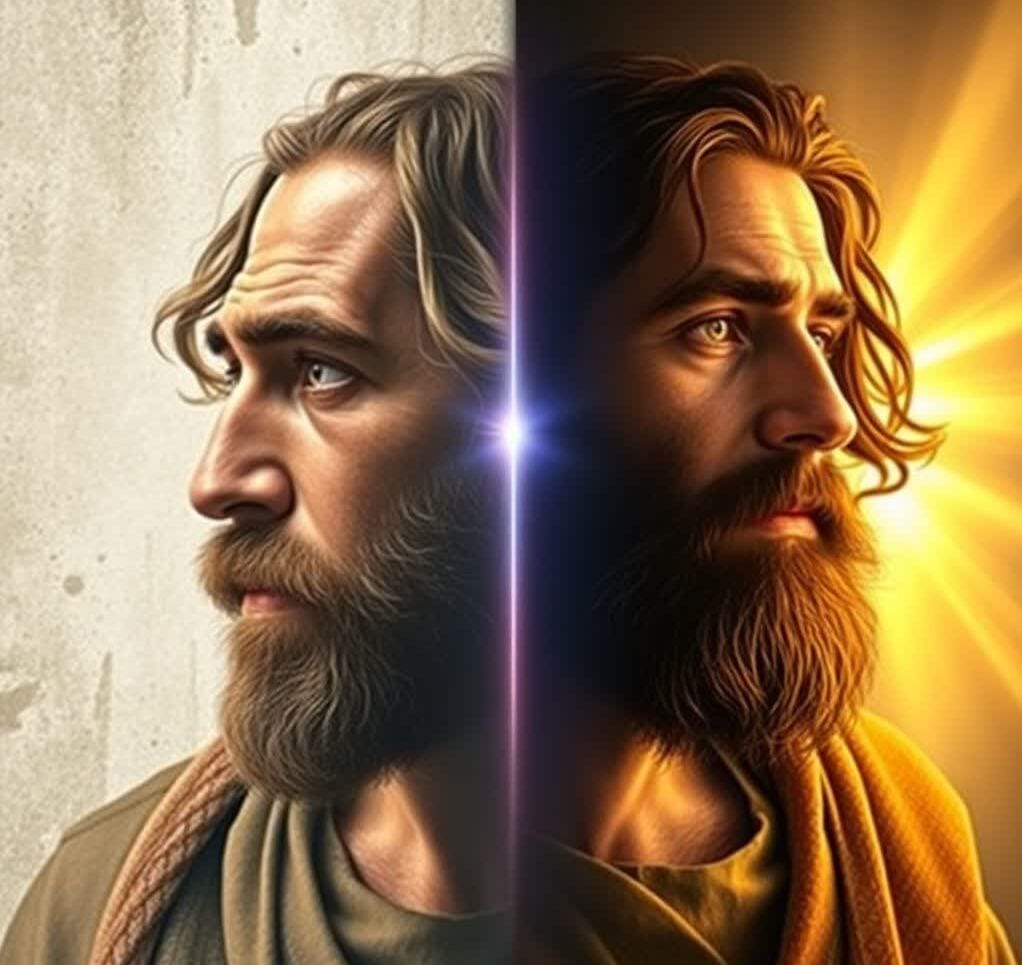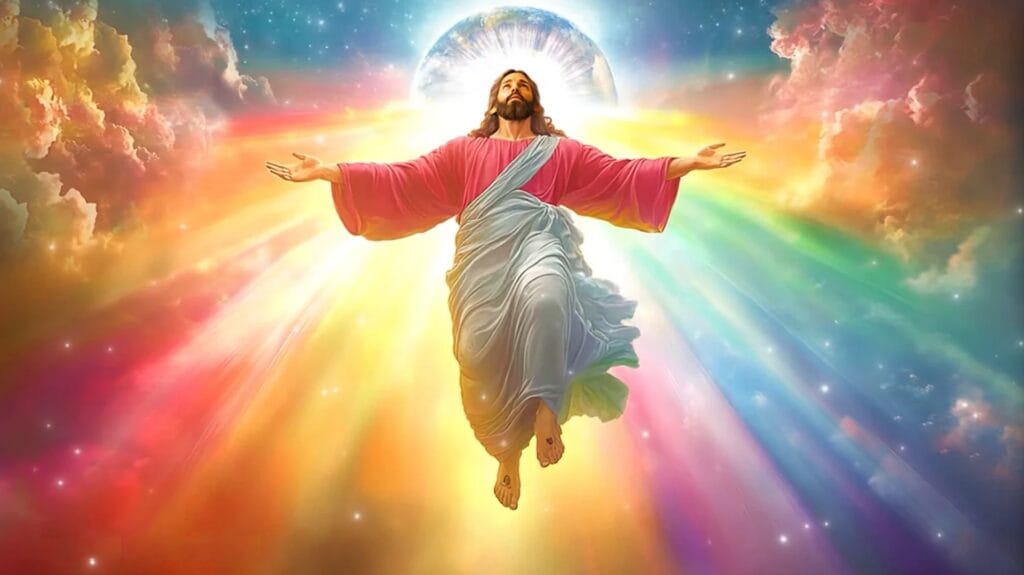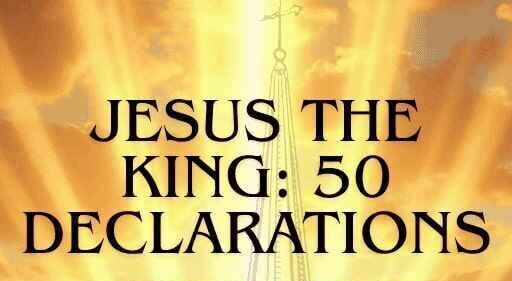📘 Trending Table of Contents

🔹 Introduction: Jesus Christ in 2025
In 2025, the message of Jesus Christ continues to be more relevant than ever. Despite rapid advances in technology, AI, and global connectivity, the human heart still longs for hope, truth, and purpose—needs that only Christ can truly fulfill.
Around the world, people are searching for spiritual clarity amid rising confusion. Social media has amplified voices from every direction, but many are still quietly asking: “Who is Jesus Christ, and does He still matter today?”
The answer is a resounding yes. Jesus is not just a historical figure; He is the living Son of God who continues to change lives, comfort the broken, and call people into a relationship with Him. His teachings—centered on love, grace, justice, humility, and forgiveness—remain the foundation for personal transformation and eternal hope.
As we explore Jesus Christ in 2025, we must recognize the tension between an increasingly secular world and the timeless call of the Gospel. While modern culture often encourages self-focus and instant gratification, Jesus calls His followers to take up their cross, deny themselves, and follow Him (Luke 9:23).
This article examines three powerful symbols—the Cross, the Barrel, and the Crown—as lenses through which we understand the mission, suffering, and victory of Jesus Christ. These symbols represent not just theological truths but practical realities for believers navigating today’s challenges.
In this generation, Christians around the globe are standing firm in faith, even when facing opposition "at the barrel"—whether it be persecution, cultural pressure, or spiritual warfare. And yet, through every hardship, the promise of the crown remains: “Be faithful, even to the point of death, and I will give you the crown of life.” (Revelation 2:10)
So, who is Jesus in 2025? He is the Savior who still walks with us. He is the King who still reigns. And He is the One whose truth cannot be silenced by trends, time, or technology.
Let’s begin our journey through the Cross, the Barrel, and the Crown—timeless truths for today's believer.
The Cross: Symbol of Sacrifice
The Cross is the most universally recognized symbol of Christianity. It stands as a powerful emblem of love, pain, sacrifice, and redemption. In 2025, its meaning has not diminished but become even more profound as the world continues to grapple with spiritual confusion, social divisions, and moral relativism. Understanding the Cross is not merely about history or religion; it's about grasping the heart of the Gospel and the very nature of God's love for humanity.
The Historical Significance of the Cross
Crucifixion was one of the most brutal forms of execution used by the Roman Empire. It was a punishment reserved for the worst criminals. To die on a cross was not only excruciatingly painful but also deeply shameful. When Jesus Christ was sentenced to die by crucifixion, He was taking upon Himself the weight of human sin and shame. He wasn’t just another victim of Roman injustice; He was the Lamb of God who came to take away the sin of the world (John 1:29).
Paul writes in 1 Corinthians 1:18: "For the message of the cross is foolishness to those who are perishing, but to us who are being saved it is the power of God."
The Spiritual Depth of Sacrifice
The Cross is where God’s justice and mercy meet. Humanity, separated from God due to sin, was incapable of earning its way back into His presence. Only a perfect, sinless sacrifice could satisfy divine justice. Jesus, fully God and fully man, became that sacrifice.
As Jesus said in Luke 23:34: "Father, forgive them, for they do not know what they are doing," His crucifixion became the very definition of divine love and grace.
The Cross and Contemporary Christianity
In today’s world, where comfort often overshadows conviction, the Cross remains countercultural. Jesus calls us to deny ourselves, take up our cross, and follow Him (Luke 9:23).
The Church in 2025 is called to stand for truth, show grace, and serve sacrificially. Living a cross-centered life means helping the poor, forgiving enemies, and walking in humility even when it’s not popular.
The Power of the Cross in Daily Life
The Cross changes lives. Through it, we find forgiveness, healing, and identity as children of God. As Hebrews 4:16 reminds us, we now have access to the throne of grace in times of need.
Global Impact of the Cross in 2025
Across the globe, Christians face persecution, yet the Cross remains their anchor. Whether in underground churches or online communities, believers continue to carry the message of hope boldly.
Every time someone chooses faith over fear or forgiveness over bitterness, the Cross speaks louder than words.
The Cross as a Call to Action
Jesus' words in Matthew 16:24-25 challenge us to action: "Whoever wants to be my disciple must deny themselves and take up their cross and follow me." This call is still relevant in 2025.
It means choosing eternal priorities, speaking truth in love, and walking faithfully even when it's difficult (Romans 8:18).
Conclusion: The Enduring Message of the Cross
The Cross is not a symbol of defeat, but of eternal victory. It reminds us we are loved, forgiven, and empowered to live with purpose. As Hebrews 12:2 says, we look to Jesus who endured the Cross for the joy set before Him.
May we carry its truth boldly into the world, living lives that reflect Christ’s love, sacrifice, and hope.
The Barrel: Spiritual Warfare & Suffering
While the Cross represents salvation and redemption, the Barrel symbolizes something more hidden, intense, and personal—spiritual warfare and suffering. In 2025, the Christian walk is not merely about the visible symbols of faith but also about recognizing the concealed battles that rage within and around us. The “Barrel” may not be as iconic as the Cross or the Crown, but it holds deep metaphorical value.
Just as soldiers prepare in trenches and bunkers—places often shaped like barrels—for conflict, believers prepare their hearts in prayer and perseverance, confronting trials, doubts, and demonic resistance. The “Barrel” becomes the battlefield of the soul, where suffering is endured, and faith is tested.
The Nature of Spiritual Warfare
“For our struggle is not against flesh and blood, but against the rulers, against the authorities, against the powers of this dark world and against the spiritual forces of evil in the heavenly realms.” — Ephesians 6:12
This warfare is unseen, but its effects are very real—mental attacks, emotional turbulence, temptation, spiritual dryness, or relentless resistance when pursuing God’s call. The Barrel represents that confined, pressured space where the believer wrestles not only with external adversity but with internal anguish.
In 2025, as Christians around the world face increasing hostility, cultural opposition, and internal spiritual fatigue, understanding and preparing for spiritual warfare has become more critical than ever.
Biblical Examples of the Barrel Experience
1. Elijah in the Cave (1 Kings 19):
After his great victory over the prophets of Baal, Elijah runs for his life, hides in a cave, and asks God to take his life. He feels defeated, alone, and purposeless. This is the “Barrel” moment—a time of isolation, exhaustion, and soul-deep suffering. But it’s in the silence of that cave where Elijah hears God’s whisper—not in wind, fire, or earthquake, but in a still small voice.
2. Paul’s Thorn in the Flesh (2 Corinthians 12:7–10):
Paul describes a constant affliction, a “thorn” that torments him. Despite asking God to remove it, the response he receives is: “My grace is sufficient for you, for my power is made perfect in weakness.” Paul’s “Barrel” wasn’t removed; instead, it became the very space where God’s strength was displayed most powerfully.
Suffering: The Unavoidable Path of Maturity
“We glory in our sufferings, because we know that suffering produces perseverance; perseverance, character; and character, hope.” — Romans 5:3–5
The “Barrel” season—where pressure, isolation, or confusion mount—is where Christians often grow the most. In this space: Faith is tested. Idols are stripped away. Prayer deepens. Intimacy with God is intensified.
Many believers in 2025, especially in regions hostile to Christianity, are experiencing their own "Barrel" seasons—praying in secret, worshiping in whispers, enduring emotional and spiritual torture. Yet, these are often the places where revival is birthed.
Mental and Emotional Suffering: A Silent Battle
In the age of technology and hyper-connectivity, mental health challenges have surged—even among devout Christians. Depression, anxiety, burnout, and suicidal thoughts have become common struggles. Unfortunately, many churches have been slow to recognize these issues as part of spiritual warfare.
The Barrel, in this context, is the mind—a battlefield that requires both spiritual and practical strategies. Scripture, therapy, worship, community, and rest all work together in the healing journey.
In 2025, we need to be louder about the biblical legitimacy of emotional suffering, and encourage Christians to seek help without shame.
How to Fight from the Barrel
Being in the Barrel does not mean you are defeated. It means you are being trained. Here’s how believers can fight:
- Wear the Full Armor of God (Ephesians 6:10–18):
Belt of Truth: Hold onto what God says, not what the world screams.
Breastplate of Righteousness: Guard your heart from guilt and shame.
Shield of Faith: Block the fiery arrows of doubt.
Sword of the Spirit: Speak the Word even when you feel nothing. - Stay in Community: Isolation intensifies warfare. We need accountability, encouragement, and intercession from the body of Christ.
- Worship Through the Storm: Worship isn’t just for Sunday; it’s a weapon. In Acts 16, Paul and Silas sang praises from a prison cell, and the prison shook.
- Fasting and Prayer: Jesus said in Matthew 17:21, “This kind does not go out except by prayer and fasting.”
Global Church: Suffering and Strength
In places like North Korea, Iran, Nigeria, and parts of China, Christians face literal persecution—beatings, imprisonment, job loss, and even martyrdom. Yet these believers, living in their “Barrels,” are some of the most resilient and joy-filled followers of Jesus on the planet.
Their faith has not withered—it has deepened. Their pain has not destroyed them—it has refined them. Their voices may be silenced in public, but their prayers roar in Heaven.
The Purpose of Suffering
- To refine us – like gold in fire (1 Peter 1:6–7)
- To break pride – reminding us of our need
- To produce glory – suffering now will be outweighed by eternal joy (Romans 8:18)
- To identify with Christ – as we suffer, we become more like Him
Christ Himself endured the greatest “Barrel” of all—the Garden of Gethsemane. He sweat blood, cried out, and faced abandonment. Yet He emerged from that moment ready to redeem the world.
Jesus and Our Barrel
“We do not have a high priest who is unable to sympathize with our weaknesses…” — Hebrews 4:15
Jesus walks with us through our darkest nights. He whispers strength into our weakness. He is Emmanuel—God with us in the storm, in the fire, in the barrel.
Modern Tools for Spiritual Victory (2025)
- Online prayer networks and 24/7 intercession rooms
- Mental health resources integrated with Christian counseling
- Global worship livestreams that unite persecuted churches with global intercession
- Discipleship apps with Bible reading plans and spiritual warfare prayers
Hope from the Barrel
“And we know that in all things God works for the good of those who love Him…” — Romans 8:28
The Barrel is not the end of your story. It is the beginning of your breakthrough. Just as Joseph was thrown in a pit, Daniel in a lion’s den, and Jesus in a tomb, your "Barrel" might be the place God is preparing your greatest testimony.
Conclusion: Embrace the Barrel
Don’t despise your suffering. Don’t ignore the warfare. Embrace it with spiritual discernment and holy courage. Let your "Barrel" become your bootcamp. From here, your spiritual muscles are built, your prayers deepen, and your character is forged.
The world in 2025 needs resilient believers—those who have wrestled in the barrel, wept in secret, fought in prayer, and risen with fresh fire.
Jesus is with you. The Holy Spirit strengthens you. And your breakthrough is on the way.
Let your "Barrel" become your altar, and from it will rise a worship and testimony the world cannot ignore.
👑 The Crown: Glory and Reward
Throughout the Bible, the crown is a powerful symbol representing victory, authority, reward, and eternal glory. Unlike earthly crowns, which are temporary and perishable, the crowns promised in Scripture speak of heavenly honor, spiritual victory, and the recognition of faithfulness before God. In 2025, amidst trials, persecution, and distractions, the hope of the crown remains an anchor for Christians striving toward their eternal reward.
The Symbolism of the Crown in Scripture
In ancient times, crowns were awarded to kings, victors, and honored guests. They denoted royal authority, victory, and honor. The Bible uses this imagery to represent rewards for enduring faith, glory awaiting the faithful, and the victory of overcoming the world, sin, and self.
Biblical Crowns: A Study of Five Eternal Rewards
The Imperishable Crown (1 Corinthians 9:24–25) is awarded to those who live a disciplined life, saying no to the flesh, and running the Christian race with focus and perseverance. In 2025, this demands uncommon self-control in a world filled with distractions.
The Crown of Rejoicing (1 Thessalonians 2:19) is the soul winner’s crown—given to those who lead others to Christ. Every soul reached becomes a jewel in this crown.
The Crown of Righteousness (2 Timothy 4:8) is promised to those who long for Christ’s return and live righteously. It's not earned by works but by a heart fixed on eternity.
The Crown of Life (James 1:12, Revelation 2:10) is for those who endure suffering, persecution, and even martyrdom for Christ. It honors their steadfast love and faith.
The Crown of Glory (1 Peter 5:2–4) is for pastors and spiritual leaders who serve selflessly. In an age of scrutiny, God promises an eternal reward for faithful shepherds.
Earthly vs. Heavenly Crowns
Earthly crowns fade, corrupt, and can be lost. Heavenly crowns are eternal, incorruptible, and reflect God’s glory. They’re not about status but about divine recognition: “Well done, good and faithful servant.”
The Crown and the Life of the Believer Today
It Motivates Faithfulness: Knowing a reward awaits strengthens us through suffering.
It Encourages Holiness: Eternity-minded living sharpens our pursuit of righteousness.
It Fuels Evangelism: Winning souls has eternal value.
It Strengthens Perseverance: We endure, knowing a crown awaits.
Casting Our Crowns: The Ultimate Act of Worship
In Revelation 4:10–11, the elders lay their crowns before God’s throne. This shows that our rewards are not for personal glory but offerings of worship to the One who is truly worthy.
Crowns in Prophecy and End-Time Revelation
Revelation portrays crowns in powerful ways: as victory (6:2), as Christ’s authority (19:12), and as something to be guarded (3:11). The Church’s end is not defeat but reward and glory.
Living Crown-Focused in 2025
A crown-focused Christian chooses character over comfort, lives for an audience of One, and fixes their eyes on eternity. This perspective brings freedom from comparison, strength in struggle, and joy in the journey.
Final Encouragement: Don’t Lose Your Crown
Jesus warned: “Hold on to what you have, so that no one will take your crown” (Revelation 3:11). Crowns can be forfeited. There is spiritual warfare over your faith. But God's grace empowers you to endure and finish well.
Conclusion: Longing for the Crown
The crown is God's affirmation that your life mattered. As you press on, let this promise strengthen your service, steady your feet, and sustain your hope. One day, you’ll receive not just a crown—but the smile of your Savior.
“Blessed is the one who perseveres under trial because, having stood the test, that person will receive the crown of life...” — James 1:12
🕊️ The Resurrection and Burial of Jesus
Exploring the historical, theological, and spiritual significance
The burial and resurrection of Jesus Christ stand as central pillars in the Christian faith. These events are foundational to theology, worship, and hope. Paul wrote, "If Christ has not been raised, your faith is futile; you are still in your sins" (1 Corinthians 15:17). This article explores biblical narratives, theological insights, historical facts, and modern implications.
Part 1: The Burial of Jesus
1.1 Events Leading to the Burial
Jesus died on a Friday afternoon—Preparation Day—fulfilling Jewish customs of not leaving a body overnight. While Romans typically left bodies to decompose, Jewish sensitivities allowed for burial exceptions.
1.2 Joseph of Arimathea
Joseph of Arimathea, a Sanhedrin member and secret follower of Jesus, requested the body from Pilate. Assisted by Nicodemus, they performed the burial.
1.3 The Burial Procedure
Following Jewish customs, Jesus’ body was wrapped in linen and spices and placed in a rock-hewn tomb. A stone was rolled over the entrance.
1.4 The Guard at the Tomb
Matthew records that guards were placed at the tomb to prevent tampering, strengthening the testimony of the resurrection.
Part 2: The Resurrection of Jesus
2.1 The Empty Tomb
Women discovered the empty tomb on Sunday morning, with angels proclaiming Jesus’ resurrection and instructing them to inform the disciples.
2.2 Jesus’ Appearances
- Mary Magdalene (John 20:14-17)
- Disciples on the road to Emmaus (Luke 24:13-35)
- The Eleven in Jerusalem and Galilee
- Thomas sees and touches Jesus (John 20:24-29)
- 500+ witnesses (1 Corinthians 15:6)
Part 3: Theological Significance
- Fulfillment of Scripture: Isaiah 53:9, Psalm 16:10, Jonah’s sign (Matthew 12:40).
- Victory Over Death: Romans 6:9 confirms Christ's victory.
- Justification: Romans 4:25 links resurrection to righteousness.
- Firstfruits: Jesus as prototype of future resurrection (1 Corinthians 15:20).
Part 4: Gospel Comparisons
Each Gospel presents complementary views on the burial and resurrection:
- John: Nicodemus aids burial.
- Matthew: Mentions the guard.
- Luke & Mark: Highlight women observing the burial.
- Differences: Reflect theological focus, not contradiction.
Part 5: Historical and Apologetic Considerations
- Empty Tomb: Acknowledged by all; body never produced.
- Disciple Transformation: From fear to martyrdom—powerful evidence.
- Early Creeds: 1 Corinthians 15 shows resurrection belief was immediate.
- Refuting Theories: Swoon, theft, and hallucinations fail scrutiny.
Part 6: Liturgical and Spiritual Dimensions
- The Lord’s Day: Sunday worship rooted in resurrection.
- Baptism: Symbolizes dying and rising with Christ (Romans 6).
- Resurrection Power: Enables endurance and holy living (Philippians 3:10).
Part 7: Resurrection in Christian Theology
- New Adam: Christ reverses Adam’s curse (1 Corinthians 15).
- Eschatological Hope: Future glorification for believers.
- Satan’s Defeat: Resurrection breaks death’s power (Hebrews 2:14).
Part 8: Contemporary Implications
- Faith and Assurance: Belief in resurrection essential for salvation (Romans 10:9).
- Ethical Living: Encourages steadfastness (1 Corinthians 15:58).
- Hope in Suffering: Resurrection reframes pain (Romans 8:18).
Conclusion
The burial confirms Christ’s death. The resurrection proves He lives. Together, they form the heart of the Gospel—bringing salvation, transformation, and eternal hope. "Because He lives, all who believe in Him will also live—both now and forever."
Faith in the Modern World
Faith, often defined as strong belief or trust in something or someone—particularly in a religious or spiritual context—has been a cornerstone of human civilization for millennia. In the modern world, characterized by rapid technological advancement, scientific discovery, globalization, and shifting social norms, the role of faith is frequently questioned, debated, and reinterpreted. Despite the evolving landscape, faith continues to hold profound significance in people's lives, serving as a moral compass, a source of hope, and a foundation for community.
The Changing Landscape of Faith
1. Scientific Advancement and Rationalism
In the modern era, science and reason have become dominant frameworks for understanding the world. Many argue that as scientific explanations for natural phenomena have expanded, traditional religious beliefs have diminished in influence. The theory of evolution, the Big Bang, and advancements in medicine and technology challenge literal interpretations of sacred texts, prompting some to question long-held beliefs.
However, this scientific progress has also prompted many to reframe faith not in opposition to science, but as complementary. While science addresses the "how" of the universe, faith often seeks to answer the "why"—questions of purpose, meaning, and morality.
2. Secularization and Individualism
Modern societies, especially in the West, are increasingly secular. Religious institutions no longer hold the same social and political power they once did. Individualism has also encouraged personal interpretation of beliefs, leading to a more private and personalized faith experience. As a result, traditional religious participation (such as church attendance) may decline, but spiritual exploration and personal belief systems remain vibrant.
3. Pluralism and Globalization
Global interconnectedness has exposed people to a variety of religious beliefs and practices. This pluralistic environment can challenge exclusivist worldviews but also fosters interfaith dialogue and mutual understanding. People are increasingly adopting eclectic spiritual practices, blending elements from different traditions, which reflects both the fluidity and resilience of faith in modern times.
The Role of Faith Today
1. Moral and Ethical Guidance
In a world facing ethical dilemmas—from climate change to artificial intelligence—faith traditions continue to provide moral frameworks. Many people turn to religious teachings for guidance on how to live justly, treat others, and pursue the common good.
2. Community and Belonging
Religious institutions and spiritual groups offer a sense of belonging in an increasingly fragmented world. They provide social support, rituals of passage (birth, marriage, death), and communal identity. In times of crisis—such as pandemics, wars, or personal loss—faith communities often become vital support networks.
3. Mental Health and Inner Peace
With rising rates of anxiety, depression, and stress, many individuals find solace in prayer, meditation, and spiritual practices. Faith offers hope and resilience, encouraging people to believe in something beyond their immediate circumstances. Religious rituals, sacred texts, and spiritual counseling contribute to emotional healing and well-being.
Challenges to Faith in the Modern World
- Religious Extremism: Misuse of religious teachings for political or violent ends has led to skepticism and fear surrounding organized religion.
- Institutional Scandals: Abuse and corruption within religious institutions have undermined public trust.
- Generational Shifts: Younger generations often seek authenticity and inclusivity, challenging traditional doctrines and dogmas.
Faith in New Forms
The modern world has also seen the emergence of "post-religious spirituality"—a move away from organized religion toward a more personal, experience-based spirituality. This includes mindfulness practices, yoga, nature worship, and a growing interest in Eastern philosophies. Social media and digital platforms have allowed spiritual movements to flourish online, creating new forms of digital faith communities.
Conclusion
Faith in the modern world is not disappearing—it is transforming. While traditional expressions of faith may face challenges, the human longing for meaning, connection, and transcendence remains strong. Whether expressed through organized religion, spiritual practices, or moral commitments, faith continues to shape human behavior and society. In a world filled with uncertainty and complexity, faith offers a steady compass, guiding individuals toward hope, purpose, and unity.
❓ Most Searched Questions About Jesus
Here are the most commonly searched questions about Jesus, answered in a simple and accessible way.
🔎 Quick Navigation
- 1. Who is Jesus?
- 2. Was Jesus real?
- 3. Is Jesus God?
- 4. Why did Jesus die?
- 5. Did Jesus rise from the dead?
- 6. What did Jesus teach?
- 7. What language did Jesus speak?
- 8. Where was Jesus born?
- 9. What religion was Jesus?
- 10. Is Jesus mentioned in the Quran?
- 11. Did Jesus have siblings?
- 12. Where is Jesus now?
- 13. What year did Jesus die?
- 14. What does Jesus look like?
- 15. What is the Second Coming of Jesus?
1. Who is Jesus?
Jesus of Nazareth is the central figure of Christianity, believed by Christians to be the Son of God and the awaited Messiah (Christ)...
2. Was Jesus real?
Yes, most historians agree that Jesus was a real historical figure...
3. Is Jesus God?
In Christian theology, Jesus is considered both fully God and fully man...
4. Why did Jesus die?
Christians believe Jesus died to atone for humanity’s sins...
5. Did Jesus rise from the dead?
Yes, Christians believe Jesus rose on the third day, known as the Resurrection...
6. What did Jesus teach?
Jesus taught about love, humility, forgiveness, justice, and the Kingdom of God...
7. What language did Jesus speak?
Jesus primarily spoke Aramaic, but He likely knew Hebrew and some Greek...
8. Where was Jesus born?
Jesus was born in Bethlehem, a town in Judea...
9. What religion was Jesus?
Jesus was Jewish. He observed Jewish law and traditions...
10. Is Jesus mentioned in the Quran?
Yes. Jesus (Isa) is honored in the Quran as a prophet and the Messiah...
11. Did Jesus have siblings?
The New Testament mentions Jesus' siblings. Interpretations vary...
12. Where is Jesus now?
According to Christian belief, Jesus ascended into heaven...
13. What year did Jesus die?
Jesus likely died between A.D. 30 and 33 during the Passover...
14. What does Jesus look like?
The Bible gives no physical description of Jesus...
15. What is the Second Coming of Jesus?
The Second Coming refers to the future return of Jesus as prophesied in the New Testament...
💡 Conclusion: Cross, Barrel & Crown
In an ever-changing world, the timeless truths of Jesus Christ shine brighter than ever in 2025. The Cross reminds us of God's unconditional love and sacrifice—a place where mercy triumphed over judgment. The Barrel symbolizes the spiritual warfare, internal battles, and trials we face daily as believers. It represents the real and often hidden cost of following Christ in a world that often resists His truth.
Finally, the Crown points us toward hope and eternal victory. It represents Christ’s triumph over death and the promise of reward for those who remain faithful. Together, these symbols capture the full journey of faith: sacrifice at the Cross, struggle through the Barrel, and glory in the Crown.
To explore these truths further, you can download the complete New Testament (KJV) for free. It's a powerful way to deepen your understanding of God's Word.
This article was written by Raghubir Singh — contributor to We Love God Daily, a platform dedicated to sharing biblical truths, devotional resources, and Christian living insights.
🔗 For more daily faith-based content and study tools, visit our main site at https://welovegoddaily.com.





